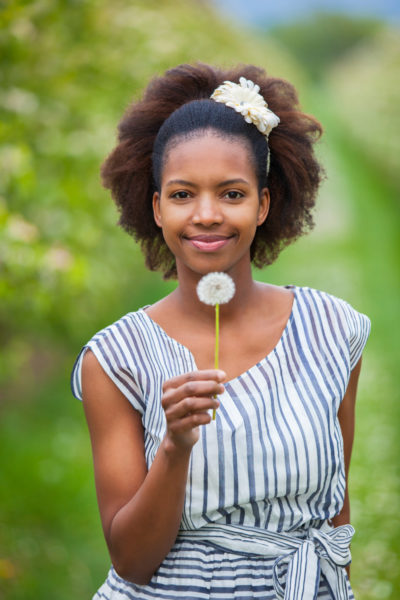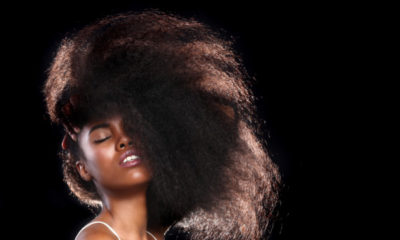Features
Tonkabelle: Relaxed Hair or Natural Hair – All Hair can be HEALTHY
 I remember when I was younger and I was called various names because I had natural hair and a lot of people teased me about it, like I had committed some sort of crime in not relaxing my hair. Anytime I would go to the salon to get my hair done they would refuse to touch it saying that I should go to get my hair relaxed or some others would tell me that they did not know how to style natural hair, so I would have to leave the salon without getting my hair done. Fast forward to the new age and there are actually salons where people with natural hair can go to get their hair done, I couldn’t be happier.
I remember when I was younger and I was called various names because I had natural hair and a lot of people teased me about it, like I had committed some sort of crime in not relaxing my hair. Anytime I would go to the salon to get my hair done they would refuse to touch it saying that I should go to get my hair relaxed or some others would tell me that they did not know how to style natural hair, so I would have to leave the salon without getting my hair done. Fast forward to the new age and there are actually salons where people with natural hair can go to get their hair done, I couldn’t be happier.
Slowly but surely natural hair is becoming something that a lot of ladies are turning towards. I am absolutely delighted for them as I think it is important for you to embrace your identity and whatever that means to you. However, what I don’t understand is why there are some people who after deciding to become natural suddenly believe that relaxed hair is unhealthy. There is truly no reason for anyone to ever fathom the notion that all relaxed hair is unhealthy because a chemical has been put in it when the truth is that relaxed/texlaxed hair can be just as healthy as natural hair.
I also don’t understand why there is such a divide between those with relaxed and natural hair. Why are there salons which are mainly for natural hair? What is wrong with a salon being for every type of hair, as long as the person wants to achieve healthy hair? I have also noticed that there are some hair events that are targeted towards only people with natural hair, organised by people with natural hair. What is wrong with lovers of healthy hair coming together and learning from one another regardless of their hair type?
I am a hair blogger who has relaxed/texlaxed hair and the reason for my blog and everything I do relating to hair care is because I truly believe that all hair can be healthy hair. Hair is just hair, if you take care of it, it will grow. Granted there may be some minor differences in how relaxed and natural hair should be cared for but the truth remains that both sides of the divide can learn from each other. As females we should come together to work towards a common goal whether it is something like healthy hair or world peace, there is no need for us to create a division between ourselves which need not exist in the first place. The segregation between us as a people be it religion, ethnic, tribal, complexion, hair, really needs to stop (believe me I don’t want to get too deep before this article turns into something else)
We should learn to embrace all sorts of hair and that it is why I educate myself on relaxed and natural hair because the premise for all healthy hair is the same. I will therefore be sharing tips on what everyone regardless of whether your hair is relaxed, texlaxed, natural, texturised, color treated, etc, can do to achieve longer, healthier hair:
- Wash and Deep Condition Hair Regularly:
It is important to wash your hair as often as you can. This can be once or twice a week, once in two weeks or even monthly depending on the state of your hair and your hair type. If you are trying to achieve longer, healthier hair I would advise washing it more often to help get your hair to a healthier state. You may wash your hair with sulfate shampoos (especially when you do a clarifying wash which can be done once a month), non-sulfate shampoos, rinse out conditioners or cleansing conditioners. For sulfate shampoos, please note that it is important to go through product labels as not all sulfates are created equally. The lauryl sulfates are harsher than the laureth sulfates with the harshest being ammonium lauryl sulfate and ammonium laureth sulfate. Then sodium lauryl sulfate and sodium laureth sulfate are the least harsh.It is important to always deep condition your hair after washing it especially when you use shampoo to wash your hair. For deep conditioners there are basically two kinds, protein and moisturising deep conditioners. Each time you want to deep condition, choose which sort of deep condition to do. You can decide to go with a light protein such as the ORS Replenishing Conditioner or you can use a moisture based deep conditioner such as Elasta QP DPR-11 Remoisturising Conditioner or a heavy protein deep conditioner such as ORS Hair Mayonnaise. However after doing a heavy protein treatment it is recommended that you follow up with a moisturising deep conditioner or alternatively you can mix the heavy protein and moisturising deep conditioners and use them that way. If you are natural you may not need to do as many protein deep condition treatments as someone with relaxed hair. - Moisturise and Seal your Hair Daily:
It is very important to moisturise and seal your hair daily or every other day. You may find that those with thicker hair need to moisturise more frequently than those with fine to medium hair. Moisturise simply means applying a water based moisturiser to your hair. It is necessary to look at the label of the hair moisturiser to ensure that water (aqua) is listed as the first ingredient; you may also want to avoid moisturisers with mineral oil or petrolatum. When moisturising your hair it is important to apply the moisturiser to your hair in sections, please note that moisturisers should not be applied to your scalp. After that, follow up with an oil to seal in the moisture. To seal simply take about a dime sized amount of oil such as coconut oil in your hands, rub your hands lightly and apply on your hair making sure to concentrate on your ends. It is important to always seal your hair after moisturising it as this will retain moisture in your hair. - Always Wear Protective Styles, Avoid Heat Tools and Protect your Hair at Night:
Our hair does not take too kindly to being exposed to the elements that is why it is important to always wear protective styles. A protective style is any hairstyle which keeps your ends protected and decreases over manipulation. If the ends of your hair are constantly being exposed it is only a matter of time before they break off. However protective styles keep your hair protected and prevent hair breakage, dryness, split ends and so on. There are two types of protective styles there are longer term protective styles where the hair is left in the said hairstyle for at least a week such as weaves, wigs, braids, twists, corn rows (with your own hair or with extensions).It is however important that you still continue caring for your hair and not neglect it while it is in a longer term protective style. Also the longer term protective style must not be done too tightly neither should a drying gel or glue be used on the hair as this may hinder the health and length of your hair. You can also opt for a shorter term protective style such as buns, chignons, french twists, updos (any hairstyle where the ends are not exposed). It is however important to take the style down daily or every other day, to moisturise and seal. Also make sure the hair style is not done too tightly as this will hinder the health and length of your hair.To improve the health and length of your hair it is also important to minimise the amount of heat you use on your hair, instead of drying it with heat, you can air dry it. Also avoid using curling tongs, hair straighteners, etc to style your hair. To achieve curly styles there are other healthier alternatives like bantu knot outs, twist outs and braid outs. It is also important that you protect your hair at night with a silk/satin scarf/bonnet to ensure your hair stays moisturised and protected throughout the night.
If everyone can do these things you would be well on your way towards achieving longer and healthier hair. Please share if you have any other tips that have worked for you.
Editor’s note: A great example of healthy texlaxed hair is Enitan Agidee and her . See her #BNFroFriday feature here.






















